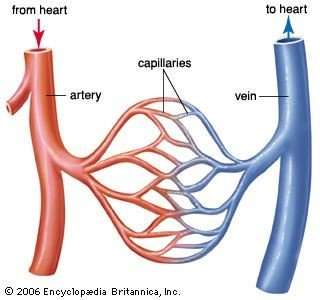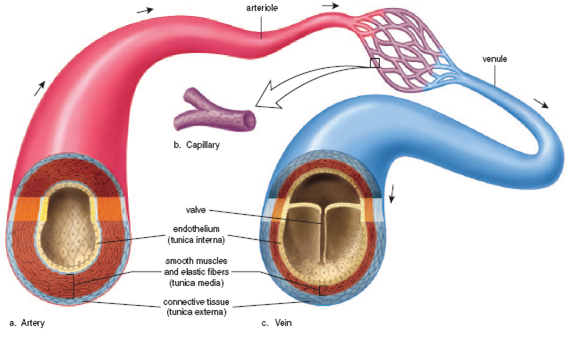Varicose veins are a sign of aging – enlarged, gnarled veins clearly visible through the skin. Is there a connection between varicose veins and diabetes? A lot of people think that diabetes causes varicose veins. The truth is rather more complicated than that.
Does Diabetes Cause Varicose Veins?
No. Diabetes does not “cause” varicose veins – not all diabetics develop them and varicose veins are also seen in other older individuals. The apparent correlation is, instead, the result of the risk factors for both being similar. Varicose veins are, in fact, caused by “venous insufficiency” – the flow of blood through the veins is slow and blood pools in the veins, causing the visible enlargement. The root cause is problems with the valves that keep blood flowing in the correct direction, towards the heart. This is why varicose veins are generally seen on the legs. Diabetes, on the other hand, is a result of insulin resistance or the production of insufficient insulin. (Type I diabetics have a chronic insufficiency from an early age, Type II develops in older adults). When the two occur together it is because both varicose veins and type II diabetes are seen in older, overweight individuals who have a family history of the disease. Both can also occur in pregnant women.
These shared risk factors are often the reason why varicose veins are often attributed to diabetes. Both diabetes and varicose veins are possible health hazards for individuals who are:
- aging
- pregnant
- obese
- have a family history or genetic predisposition
How Can Diabetics Prevent Varicose Veins?
First of all, remember that the one does not cause the other – but the measures taken to prevent varicose veins can also help with circulation problems caused by diabetes. Patients should keep salt intake down and eat plenty of fiber, elevate the legs when resting (a reclining chair with foot support is recommended) and avoid constricting clothing.
How Does Diabetes Affect Circulation?
Diabetes (both types) affects circulation by damaging veins and valves – this is a direct result of elevated blood sugar, so the better the disease is managed with medication and insulin, the less damage is done. If blood sugar stays too high for too long, it can lead to ruptured veins, edema, and damage to organs and nerves. Kidney damage is particularly common in diabetics because the damage affects the ability to filter the blood.
Diabetics are also more inclined towards wounds and ulcers. Nerve damage can lead to numb areas, and thus to injuries that are not noticed right away. The legs and feet should be inspected regularly, both for unnoticed damage and for the development of varicose veins and other issues.
What Should Patients Do?
Although diabetes does not cause varicose veins, it can make the risks and damage higher. Untreated varicose veins can get infected, and the infection can be critical and life-threatening. Diabetics have a higher risk due to their weaker immune system.
We offer treatments for varicose veins that include the simple option of endovenous laser or ultrasound-guided sclerotherapy. These can be done without general anesthetic as an outpatient procedure which minimizes downtime. The fact that surgery can be avoided is particularly important for diabetics, who tend to have problems healing. We have the expertise to provide these new treatments at a reasonable cost.
What are arteries?
- Arteries carry oxygenated blood removed from the heart except for the pulmonary artery.
- These are deeply located in the body for the most part.
- These are thick-walled.
- These possess slender lumen.
- Valves are absent.
- These show movement of blood giving pulse.
- Blood in arteries moves with pressure.
- Arteries empty at the time of death.
- If arterial wall is bruised, the blood comes out like a ‘fountain’ in giant space all around the artery.
What do veins do?
- Veins carry deoxygenated blood toward the heart except for the respiratory organ veins.
- These are superficial and deep in location.
- These are thin walled.
- Valves provide one way flow of blood/
- These are blue in color/
- They move sluggishly throughout the blood.
- Blood in the veins moves beneath very low pressure/
- Veins get stuffed up at time of death/
- If the venous wall is bruised, blood comes out, collects in a pool in a tiny space around the vein.

Different Kinds of Arteries and Veins
There are two kinds of arteries within the body: pulmonary and systemic. The pulmonary artery carries deoxygenated blood from the heart to the lungs, for purification whereas the systemic arteries that carry aerated blood from the heart to alternative elements of the body. Arterioles and capillaries are further extensions of the (main) artery that help transport blood to tinier parts within the body.
Veins will be classified as pulmonary veins and systemic veins. The pulmonary veins are a group of veins that deliver oxygenated blood from the lungs to the heart and therefore the systemic veins drain the tissues of the body and deliver deoxygenated blood to the heart. pulmonic and systemic veins can either be superficial (can be seen or felt if touched on sure areas on the hands and legs) or embedded deep inside the body.

Keeping Your Veins Healthy
If you are seeking relief from pain caused by vain problems, we can provide the relief you are seeking. Located conveniently in North Center Chicago, Chicago Vein Institute is ready to take a look at your veins and put together a comprehensive treatment plan for you.
If you would like to schedule an appointment, get in touch with us today and get the process started.
North Center
2333 W. Irving Park Rd.
Chicago, IL 60618
*Free Parking Behind Building
Portage, IN
6050 Sterling Creek Rd.
Portage, IN 46368
219.212.0188
*Free Parking Available
See Portage Indiana Office Hours
At Chicago Vein Institute, we focus on one thing—vein care. That’s it. While other clinics might offer botox, pain management, or other unrelated services, our entire practice is built around diagnosing and treating vein disease. From varicose veins to spider veins and chronic venous issues, our team uses the latest, minimally invasive treatments to help you feel better and get back to living. We’ve performed over 11,000 vein procedures and offer treatments like Endovenous Laser Ablation (EVLA), Ambulatory Phlebectomy, Sclerotherapy, and wound care for venous ulcers. Same-day appointments are often available, and our multilingual team is here to make sure you feel supported every step of the way.
